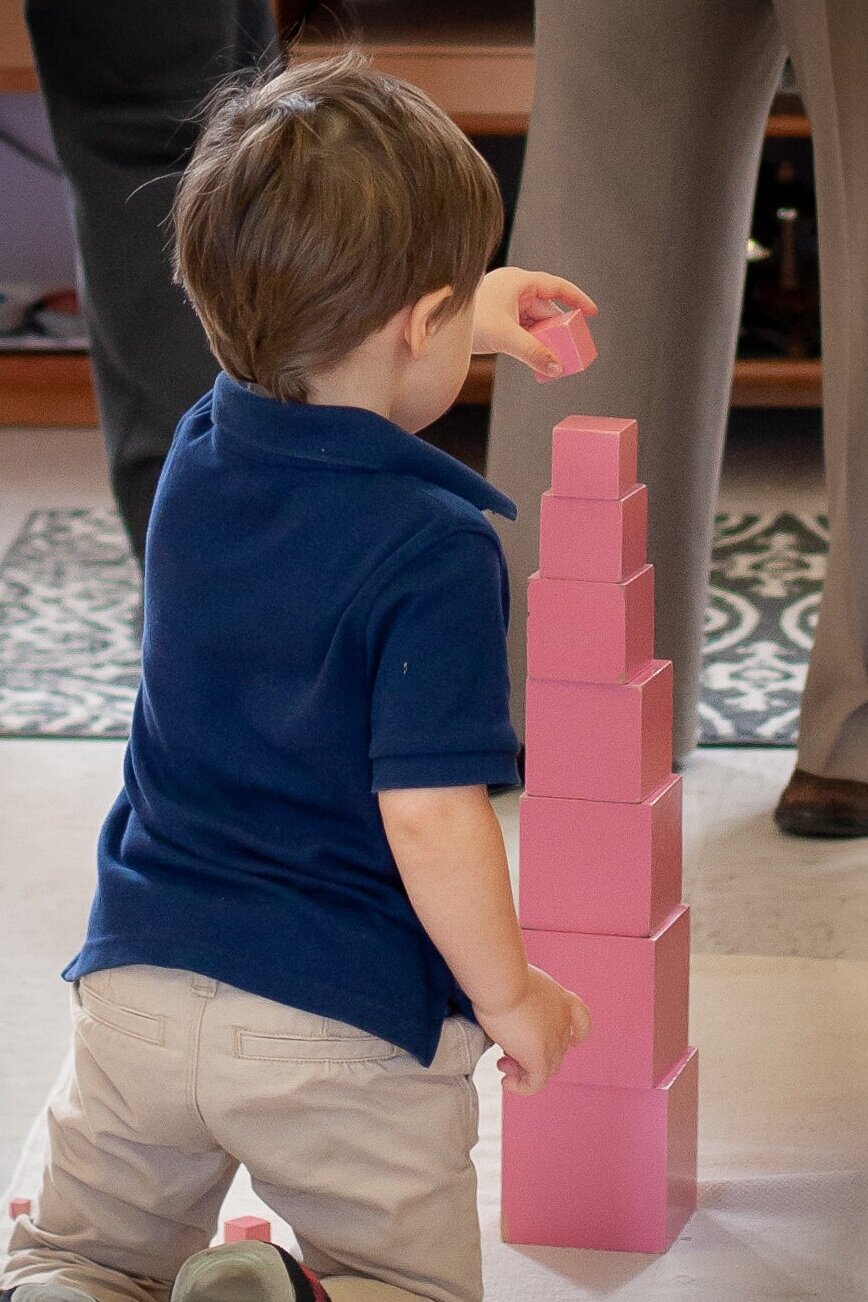Montessori communities minimize the interruption of children working to allow each child to focus and enjoy their own successes. This is done not only through an uninterrupted work cycle, but also through “following the child”, which means for faculty to take on more of a role of an observer, watching to see when children need new lessons and allowing them to embrace, accept, and overcome failure with these lessons without unnecessary intervention. Preparing a child for failure is preparing them for life, and it builds resilience to learn from our failures and find successes and improvements along the way.
Building resilience is accomplished through the carefully designed Montessori materials in our classrooms. Montessori materials were created to be self-correcting; when a child going through a Montessori lesson makes a mistake, they get immediate, impersonal feedback directly from the materials, which let them know that something is not working. When they then discover how to correct themselves, a number of rewarding outcomes happen: the triumph is theirs, their concentration has not been interrupted, and they will learn that setbacks are actually steps to success.
Grace and Courtesy (i.e. Manners)
Lessons in Grace and Courtesy, otherwise known as “manners,”are an integral part of the Montessori curriculum, beginning with the youngest of our children. These lessons focus on learning about and accepting cultural norms, while being conscientious of differing cultures and understanding how to respond and interact respectfully and courteously to others. Montessori education's universal goal is to bring about peace in the world through better education.
When you come to visit us, you will see the results of this work through the politeness of our students, often having one of our three year olds introducing themselves to you and offering you a cup of tea. You are also likely to have doors held for you and to hear "please" and "thank you" consistently from students who are unusually young, in our society, to be expected to behave in this fashion.
These are also results that go unseen, with all of our environments dedicated to guiding respectful and mutually agreeable conflict resolution among students. When tensions or disagreements occur, children work together to work out their differences, with guidance from faculty.
All students in our school, including the youngest members of our comments in the YCC, are supported in conflict resolution and are provided a curriculum focusing on peaceful relationships and interactions. Students are taught to respect each other's personal and work space. This creates an early awareness of others' bodily autonomy and the importance of consent in social situations.
Mixed Age Communities Empowering Leadership and Learning
Montessori classrooms are comprised of students with different ages who are in the same plane of development. This mixed-aged environment has a number of advantages:









